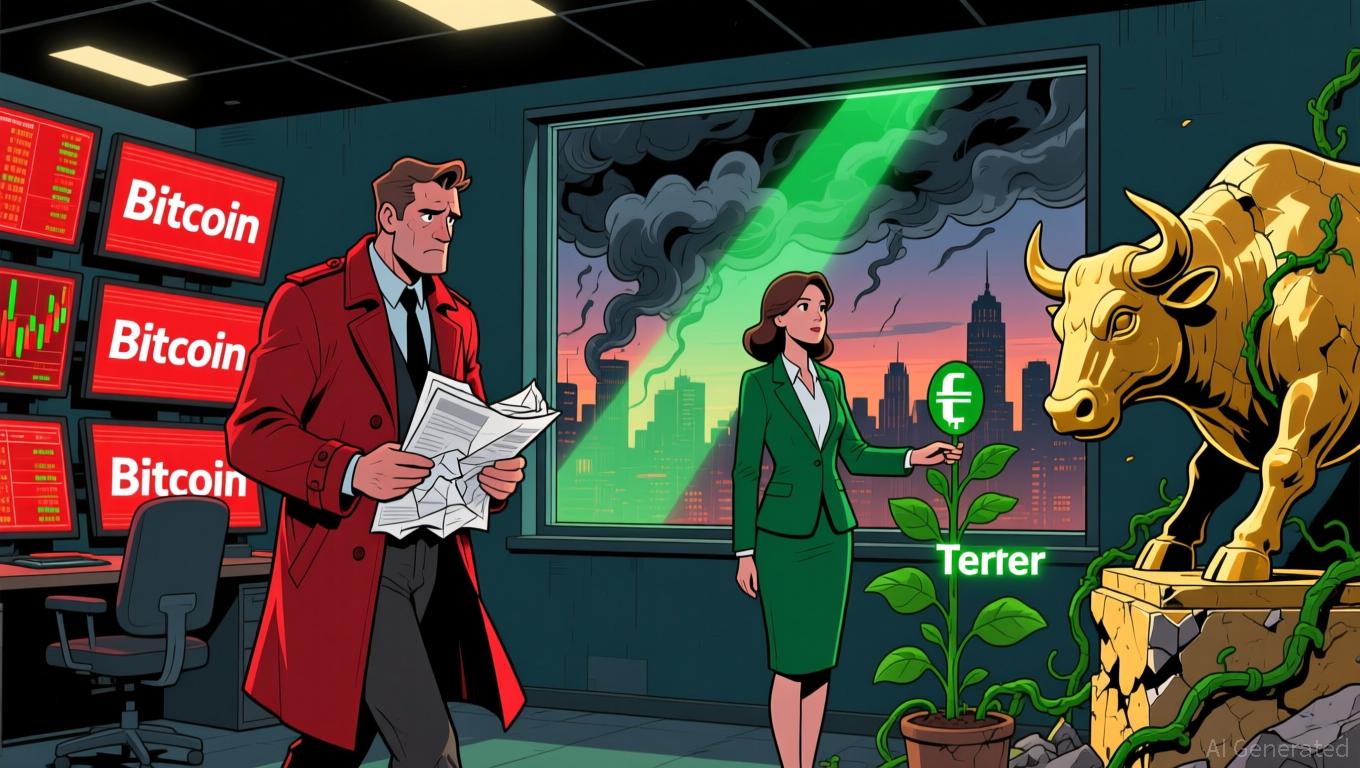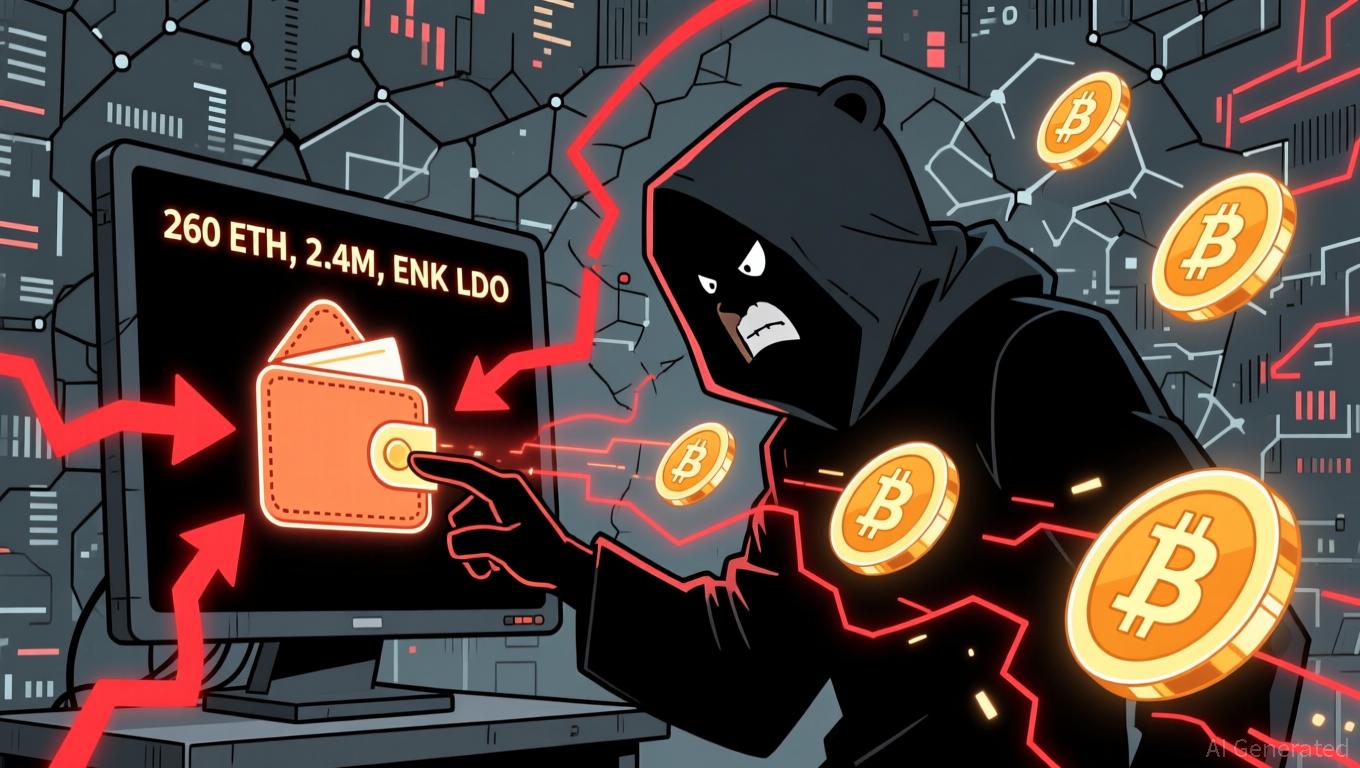Bitcoin’s Sharp Decline: Uncovering the Causes Behind the 2025 BTC Collapse
- The 2025 Bitcoin crash below $100,000 stemmed from DeFi vulnerabilities and the Fed's restrictive policies, creating systemic market panic. - Elixir deUSD's collapse—triggered by Stream Finance's $93M loss—exposed DeFi's fragility, causing $200M TVL losses and eroding stablecoin trust. - The Fed's hawkish stance (3% inflation target) and liquidity hoarding worsened cash shortages, amplifying Bitcoin's volatility amid delayed economic data. - Investors now prioritize DeFi risk mitigation and macro hedging
The DeFi Domino: Elixir deUSD's Collapse
The Elixir deUSD stablecoin, which was intended to keep a 1:1 value with the U.S. dollar, collapsed in late 2025 after Stream Finance—a key borrower and liquidity provider—suffered a $93 million loss in trading. Stream had used deUSD as collateral for speculative trades, but as asset values plunged, widespread liquidations depleted Elixir’s reserves, leading to a suspension of redemptions. In just a few hours, deUSD’s price
This event exposed the instability of synthetic asset frameworks and the tight interconnections among DeFi protocols. Elixir’s disclosure that Stream held 90% of deUSD’s supply and declined to settle its debts highlighted the dangers of excessive concentration. As one blockchain analyst observed, "

The Fed's Hawkish Pivot: A Macro Tailwind for Volatility
While the weaknesses in DeFi set the
This firm stance, along with delayed economic reports due to a government shutdown, created uncertainty. Banks began to stockpile liquidity, borrowing a record $50.35 billion from the Fed’s Standing Repo Facility in a single day—an indicator of tightening cash conditions. The Fed’s ongoing quantitative tightening (QT) and large Treasury auctions further strained liquidity, increasing volatility in assets like Bitcoin.
The Perfect Storm: Sentiment and Spillovers
The combination of DeFi’s unraveling and the Fed’s policies fueled a cycle of fear. As deUSD lost its peg, Bitcoin’s value
Wider economic sentiment deteriorated as companies like Metaplanet saw their Bitcoin holdings fall underwater,
Implications for Investors
For those investing, the 2025 crash highlights the importance of caution in two key areas:
1. Managing DeFi Risks: The deUSD failure demonstrates the perils of excessive leverage and unclear collateral arrangements. Investors should focus on platforms with diversified reserves and open governance.
2. Macro Hedging: With the Fed maintaining a tough stance, it’s crucial to reassess risk assets. The growing correlation between Bitcoin and equities suggests it may no longer act as an independent hedge against traditional market swings
Conclusion
The 2025 Bitcoin crash was not an isolated incident but rather a reflection of deeper structural problems. The Elixir deUSD debacle revealed weaknesses in DeFi’s design, while the Fed’s strict policies heightened broader economic vulnerabilities. For investors, the takeaway is unmistakable: in today’s interconnected markets, diversification and robust risk controls are essential, not optional.
Disclaimer: The content of this article solely reflects the author's opinion and does not represent the platform in any capacity. This article is not intended to serve as a reference for making investment decisions.
You may also like
Ethereum Updates Today: BitMine's Acquisition of Ethereum Reflects the 1990s Telecom and Internet Boom
- BitMine acquires 3.5M ETH ($11.2B), becoming largest publicly traded Ethereum holder, surpassing Bitcoin-focused treasuries. - Institutional buying drives Ethereum's exchange balances to multi-year lows, with BitMine's purchase marking a major institutional acquisition. - JPMorgan and ARK Invest boost BitMine holdings amid regulatory progress enabling Ethereum staking ETPs with 3-5% yields. - CEO Chi Tsang compares Ethereum's potential to 1990s telecom/internet revolutions, targeting 5% supply ownership

Bitcoin Updates: Tether Rises While Bitcoin Drops, Indicating Investors Seek Safe Havens
- Tether CEO labels November 2025 "Bitcoin Black Friday," signaling heightened crypto volatility and Tether's record $184B market dominance amid Bitcoin's 11% monthly decline. - Stablecoin market expands to $300B as traders shift to safer assets, mirroring historical patterns where Tether's share rises during Bitcoin bearish phases. - Bitcoin's BVIV index breaks key resistance, indicating prolonged turbulence driven by thinning liquidity and macroeconomic risks like U.S. credit rating downgrades. - Institu

JPMorgan is unwilling to cover the legal expenses of Frank founder Charlie Javice
Ethereum Updates: Arthur Hayes Sells $2.45M ETH/DeFi Holdings, Indicating Negative Market Sentiment
- Arthur Hayes sold $2.45M in Ethereum and DeFi tokens, including 260 ETH and 2.4M ENA, signaling potential bearish sentiment. - Blockchain analysts highlight risks of price dips as large ETH sales often trigger short-term market declines, with $3,000 support levels under scrutiny. - Simultaneous offloading of AAVE, UNI, and LDO tokens suggests profit-taking amid rising traditional finance rates and DeFi liquidity shifts. - Zcash (ZEC) whale activity and leveraged ETH short positions further amplify crypto
